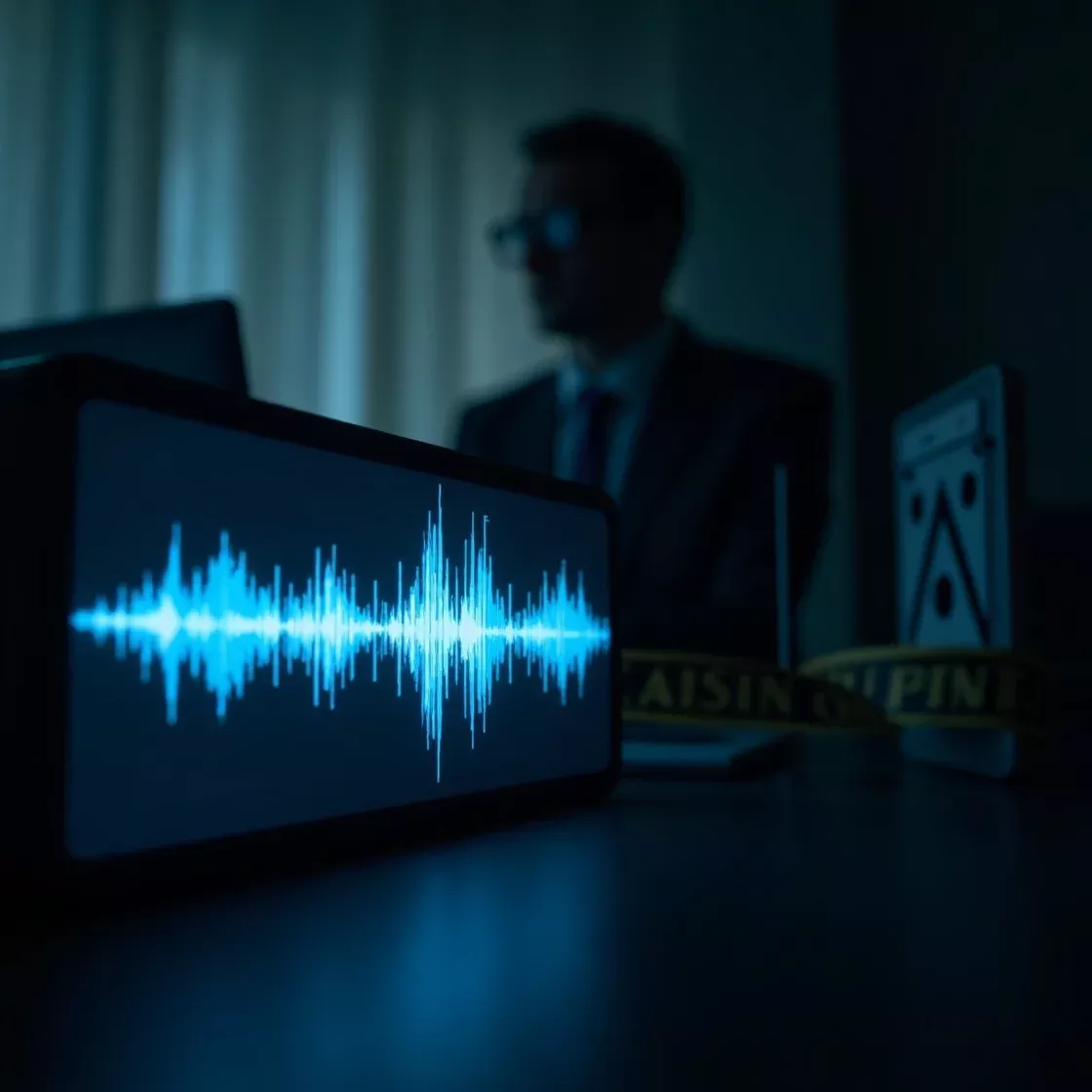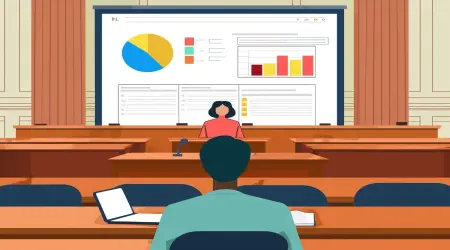FBI Warns About Deepfake Audio Scams Targeting Government Officials – What You Should Know
Introduction
Picture this: you get a call from someone who sounds just like a high-ranking government official, urgently asking for sensitive info or money. You might trust that voice, but what if it’s a fake? That’s the reality with deepfake audio scams, which are on the rise. These scams use AI to create very convincing fake voices. Back in May 2025, the FBI put out a serious warning about a campaign where scammers impersonate senior U.S. government officials using AI-generated voice messages, targeting both current and former officials and their contacts.
These deepfake audio scams are part of a bigger spike in AI-driven cybercrime that takes advantage of trust to steal personal info or cash. The FBI's alert, which you might have seen reported by sites like Ars Technica, really stresses the need to be cautious since deepfake technology is becoming easier to access. In this blog post on Temploop, we dig into the FBI's warning, explain how these scams work, and offer some practical tips for protecting yourself. Whether you work for the government or just anyone, getting to grips with these scams is super important in our digital age.
Why should you pay attention? Deepfake audio scams don’t just go after officials; they can hit anyone who has a phone or an email. By learning the ins and outs of these scams, you can keep your personal information safe and steer clear of becoming a victim. Let’s dive into why these scams are so concerning and how you can stay out of trouble.
👉VPNSecure Cancels Lifetime Subscriptions: What Happened and What’s Next
Section 1: What Are Deepfake Audio Scams?
1.1 Defining Deepfake Audio
Deepfake audio is all about AI-generated voice recordings that can mimic a real person's voice really well. Scammers use machine learning to analyze short audio clips, sometimes just a couple of seconds, to copy someone’s tone, pitch, and speaking style. This tech, which used to be just in research labs, is now out there for anyone to use, including criminals.
Unlike older scams where someone pretended to be someone else over the phone, deepfake audio scams sound just like someone you know and trust—like a colleague, family member, or, as the FBI points out, a senior government official. Because they sound so real, they can fool a lot of people, with victims often not realizing what's happening until it's too late.
1.2 How Deepfakes Are Created
Creating deepfake audio involves a few steps:
- Collecting Voice Samples : Scammers gather audio from public places like speeches, social media videos, or voicemails.
- Training AI Models : They use tools to teach AI how to imitate the target's voice.
- Generating Audio : The AI then creates new audio based on a script, sounding just like the real person.
For instance, a scammer might take a YouTube video of a government official speaking to make a fake voicemail asking for urgent funds. As noted by The Register, these scams often mix text messages and voice messages to make it seem more trustworthy.
1.3 Why Deepfake Audio Scams Are Effective
Deepfake audio scams really take advantage of our trust in familiar voices. When you hear someone who sounds like your boss or a trusted official, your gut instinct is to believe what they’re saying—especially if the message seems urgent. The FBI’s warning highlights how scammers use this approach to trick victims into giving out login details, financial info, or clicking on dangerous links that could let in malware or steal data.
These scams work so well because:
- Realism : Advanced AI makes deepfakes almost indistinguishable from real voices.
- Emotional Manipulation : Scammers create a sense of urgency, like claiming a crisis, making us less likely to think critically.
- Targeted Approach : By going after officials with access to sensitive information, scammers make their operations more effective.
Section 2: The FBI Warning: Details and Implications
2.1 Overview of the FBI’s Alert
In May 2025, the FBI’s Internet Crime Complaint Center (IC3) let the public know about a scam campaign that’s been going since April 2025. According to CNBC, scammers have been using these AI-generated voice messages to impersonate senior U.S. federal and state officials, and they're targeting both current and former officials along with their contacts. The goal? To get access to personal accounts, which could then lead to more significant breaches of government systems or scams.
The FBI advises, “If you get a message claiming to be from a senior U.S. official, don’t just assume it’s real.” This warning really highlights how sophisticated these scams have become and how much we need to be aware.
2.2 Who Is Being Targeted?
The main targets are:
- Current and Former Government Officials : These folks often have access to sensitive information, making them prime targets.
- Their Contacts : Scammers take advantage of these trusted relationships to widen their reach, potentially going after friends or family.
Although the FBI is focusing on officials, similar tricks can be used against anyone, from business leaders to regular people, as pointed out by Bleeping Computer.
2.3 Methods Used by Scammers
Scammers usually use two main techniques:
- Smishing (SMS Phishing) : Sending texts that look like they come from someone official, often with links to harmful sites.
- Vishing (Voice Phishing) : Using deepfake audio in phone calls or voicemails to trick victims into giving up information or taking action.
For example, a victim may get a text followed by a voicemail that sounds just like a government official asking for urgent help, as mentioned by CyberScoop.
2.4 Implications of the Warning
The FBI’s alert has big implications:
- Cybersecurity Risks : Compromised accounts can lead to data breaches or getting into systems.
- Public Trust : Deepfakes weaken our confidence in digital communications, making it tough to trust calls or messages.
- Broader Threat : While officials are the focus, these tactics could target anyone, underscoring the need for public awareness.
Section 3: How Deepfake Audio Scams Work
3.1 Step-by-Step Process
Deepfake audio scams typically follow a clear process to deceive victims:
- Target Selection : Scammers pick high-value targets like government officials or their contacts.
- Voice Sample Collection : They gather audio from public sources, like speeches or social media.
- AI Model Training : They use AI tools to create a voice clone that mimics the target’s speech.
- Script Creation : They write a script that exploits trust, often with urgent or emotional appeals.
- Delivery : The deepfake audio is sent through phone calls, voicemails, or texts.
- Exploitation : Victims are tricked into sharing their data, sending money, or clicking harmful links.
- Covering Tracks : Scammers use anonymous methods to dodge detection.
3.2 Technology Behind Voice Cloning
Voice cloning leans on advanced deep learning algorithms, especially GANs, which look at audio samples to replicate voices. Some tools require very little audio—sometimes just a few seconds—to make convincing fakes, which makes this tech accessible for both innovators and criminals.
👉College Student Demands Refund Over Professor’s ChatGPT Use in 2025
3.3 Real-World Example
Imagine a government official getting a voicemail that sounds like the FBI Director, asking urgently for their login details for a “security check.” Believing it’s real, the official complies, only to find out later that their account got hacked. Such stories, as reported by Cointelegraph, show the real risks these scams pose.
Section 4: Real-World Examples and Case Studies
4.1 Notable Deepfake Audio Scams
Even though the specific details of the FBI’s warned campaign are limited, past cases offer context:
- 2023 Corporate Scam : A CEO was fooled into transferring $243,000 after a deepfake call mimicked his boss’s voice, according to cybersecurity blogs.
- Family Fraud Case : In the UK, a woman sent money after a deepfake voicemail claimed her daughter was in trouble, highlighting the emotional manipulation involved.
4.2 Impact on Victims
The fallout from deepfake audio scams includes:
- Financial Loss : Victims can lose serious money, as seen in the corporate scam.
- Data Breaches : Hacked accounts may leak sensitive information.
- Emotional Distress : Believing a loved one is in danger can cause real psychological harm.
4.3 Lessons Learned
These cases underline how critical it is to verify and be skeptical. As noted by San.com, the fast-growing deepfake tech market fuels these scams, highlighting how essential education is.
Section 5: How to Spot and Prevent Deepfake Audio Scams
5.1 Identifying Suspicious Messages
To spot deepfake audio scams, keep an eye out for:
- Check for Urgency : Scammers often try to rush you to avoid careful thinking.
- Listen for Anomalies : Odd wording or unnatural pauses might signal a deepfake.
- Verify the Source : Reach out to the supposed sender via a known channel.
5.2 Verification Methods
- Independent Contact : Use a verified phone number or email to check the sender's identity.
- Ask Specific Questions : Ask things only the real person would know, as pointed out by The Outpost.
- Use Technology : Tools like voice authentication software can help catch fakes.
5.3 Best Practices for Protection
- Enable Two-Factor Authentication (2FA) : This adds another security layer to your accounts.
- Avoid Clicking Links : Don’t click on unexpected links in texts or emails.
- Educate Yourself : Stay informed about scam tactics through resources like the FBI’s IC3 website.
Section 6: The Role of AI and Technology in Combating Deepfakes
6.1 Current Detection Tools
AI tools are being developed to spot deepfakes by analyzing:
- Audio Patterns : Looking for inconsistencies in pitch or rhythm.
- Metadata : Finding signs of digital manipulation.
- Behavioral Cues : Spotting unnatural speech patterns.
Companies like Deepware Scanner and Sentinel are leading the way in these efforts, but detection still poses challenges, as noted by CyberGuy.
6.2 Challenges in Detection
- Advancing Technology : As deepfake tools get better, detection methods have a hard time keeping up.
- Scalability : Analyzing every call or message in real-time needs a lot of resources.
- False Positives : Legitimate communicaitons might get flagged as fakes.
6.3 Future Developments
Future solutions could include:
- Blockchain for Authentication : For verifying where audio messages come from.
- Advanced AI Models : To improve detection accuracy.
- Public Awareness Campaigns : Educating folks to reduce how often scams succeed.
Section 7: Legal and Regulatory Responses
7.1 U.S. Initiatives
The U.S. is looking into laws to make malicious deepfake use a crime, with ideas for mandatory disclosure of AI-generated content. The FBI’s IC3 is actively keeping tabs on these scams and encouraging victims to report their experiences.
7.2 International Efforts
- European Union : Working on guidelines to combat AI-driven misinformation.
- Global Cooperation : Agencies like Interpol are sharing intel on cybercrime.
7.3 Challenges in Regulation
- Global Jurisdiction : Scammers operate across countries, which complicates enforcement.
- Balancing Innovation : We need regulations that don't stifle real AI development.
Section 8: The Broader Impact of Deepfakes on Society
8.1 Ethical Concerns
Deepfakes raise questions about:
- Privacy : Using someone’s voice without their consent.
- Trust : Draining confidence in digital communications.
- Misinformation : Spreading false stories, as seen in past election-related deepfakes.
8.2 Societal Implications
The rise of deepfakes might:
- Undermine democracy by spreading fake news.
- Complicate legal processes with made-up evidence.
- Increase skepticism toward real media.
8.3 Building Digital Trust
Potential solutions could involve:
- Digital Literacy : Educating people about deepfake risks.
- Authentication Standards : Creating protocols for verifying content.
Section 9: Conclusion
The FBI’s warning about deepfake audio scams aiming at government officials shows a real cybersecurity threat. These AI-driven scams exploit trust, but by understanding how they function and adopting safety measures, you can stay safe. From checking suspicious messages to using two-factor authentication, simple steps can make a big difference.
As deepfake technology continues to change, so must we update our defenses. Keep yourself informed through reliable sources like the FBI’s IC3 and cybersecurity blogs, and share what you learn to help out others. At Temploop, we’re dedicated to keeping you in the loop about new threats like FBI warns about deepfake audio scams. Take action today to protect your digital life.
FAQs
- What’s a deepfake?
A deepfake is media created by AI that changes audio, video, or images to imitate real people and often used to trick others. - How can I tell if a voice message is a deepfake?
Listen for unnatural tones, strange word choices, or pauses. Verify the sender through official contact details. - Who gets hit by these scams?
Mainly current or former senior US federal or state officials and their contacts, but really anyone can be targeted. - What should I do if I get a suspicious message from someone claiming to be an official?
Do nothing and don’t click on any links. Verify the sender through official channels and report to the FBI’s IC3. - Are there tools to catch deepfakes?
Some tools are around, but they aren’t always reliable, especially for audio. Staying alert and confirming identities is still the best defense. - Can deepfakes be used for more than just scams?
Sure, deepfakes can be used to spread misinformation, mess with politics, or for entertainment, but their misuse can lead to big ethical concerns. - What legal actions are happening against deepfake scams?
Certain places have imposed fines or penalties, but overall laws are still being created to handle deepfake misuse.
Key Citations
- FBI warns of ongoing scam that uses deepfake audio to impersonate government officials
- Deepfake voices of senior US officials used in scams: FBI
- FBI warns of AI voice messages impersonating top U.S. officials
- FBI: US officials targeted in voice deepfake attacks since April
- FBI warns scammers are using AI voices to impersonate US officials
- FBI Warns of AI-Powered Deepfake Scams Targeting U.S. Officials
- Scams use AI to mimic senior officials' voices, FBI warns
- FBI warns of fake texts, deepfake calls impersonating senior U.S. officials
- AI scammers are now impersonating US government bigwigs, says FBI
- FBI's new warning about AI-driven scams that are after your cash










